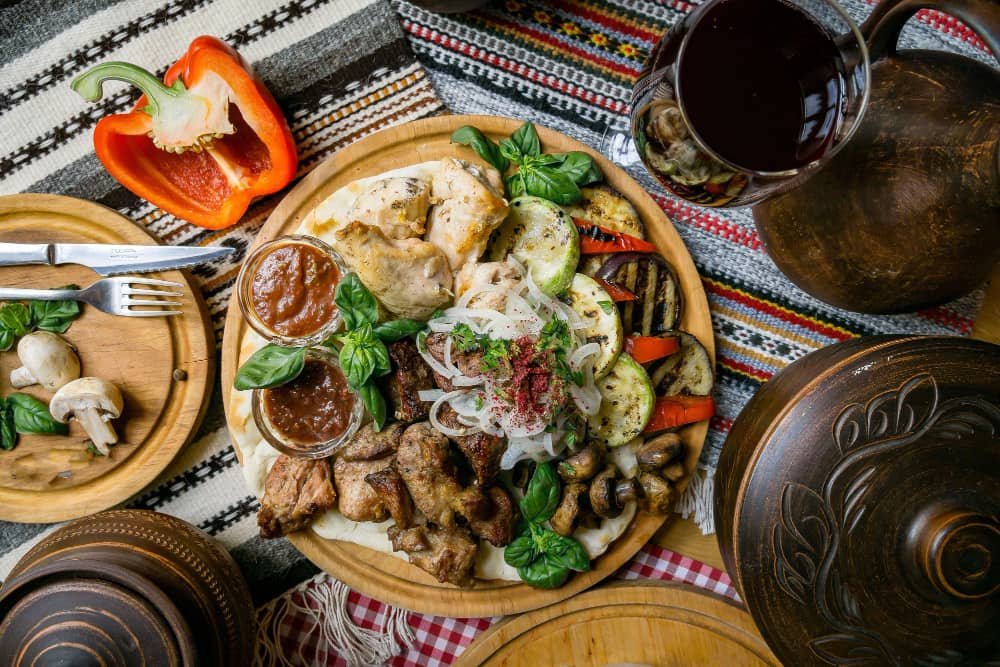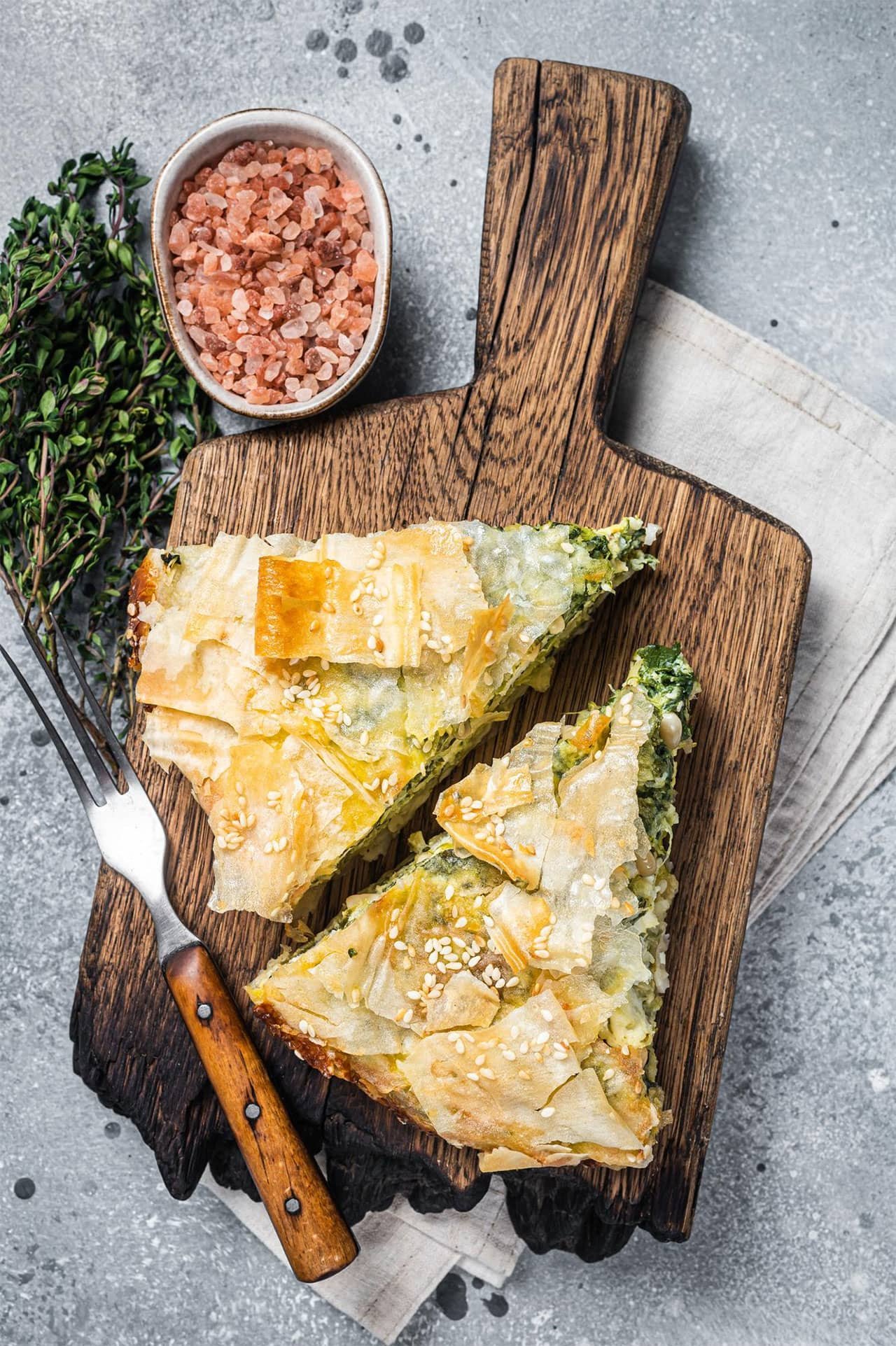Balkan cuisine is a delicious melting pot of flavors. The region’s diverse history and culture have resulted in a unique cuisine that is both flavorful and nutritious. The Balkan region is home to some of the world’s best-known dishes, such as baklava and ćevapi. But there are many other lesser-known but equally delicious dishes to be found in the Balkans. If you’re looking for a new culinary adventure, look no further than the Balkans!
The Balkan region is well known for its rich and diverse cuisine, which has been influenced by a variety of cultures over the centuries. The food of the Balkans is a delicious melting pot of flavors, and it is no wonder that it is becoming increasingly popular with food lovers all over the world.
The history of Balkan food is fascinating, and it is thought that the first settlers in the region were the Illyrians, who were later followed by the Greeks. The Romans also left their mark on Balkan cuisine, and there was also significant influence from the Ottoman Empire. In more recent history, the Communist regime also had an impact on the food of the region.
Today, the various cuisines of the Balkans are quite distinct from each other, but there are some commonalities. One of the most prevalent staples of Balkan cuisine is meat, often pork or lamb, which is usually cooked in a stew or grilled. Bread is also very important in Balkan cuisine, and a variety of flatbreads and pita breads are used in many dishes.
There are some iconic Balkan dishes that are loved all over the world, such as Bosnia’s ćevapi and Serbia’s pljeskavica. These delicious grilled meats are usually served with flatbreads and a variety of condiments. Another popular dish is Greece’s spanakopita, a savory pastry filled with spinach and feta cheese.
If you’re looking to try something new and exciting, then look no further than Balkan cuisine. You’ll be sure to find something to suit your taste buds, whether you prefer hearty stews or light snacks. So what are you waiting for? Start exploring this delicious culinary tradition today!

The History of Balkan Food
Balkan food has its roots in the diverse cultures and cuisines of the peoples who have settled in the Balkans over the centuries. This includes the Illyrians, Thracians, Greeks, Romans, Slavs, Turks, and Austrians. Each of these groups has left their mark on Balkan cuisine, creating a delicious melting pot of flavors. The Illyrians were one of the first groups to settle in the Balkans. They were a tribal people who lived off of hunting and gathering.
The Illyrians were also known for their love of pork, which they often cooked with garlic and rosemary. Another specialty of the Illyrians was a dish called ‘matthiola’, which was made with sheep’s milk cheese and wild herbs. The Thracians were another ancient people who settled in the Balkans. They were known for their agriculture, particularly their wheat and barley crops. The Thracians also raised livestock, including pigs, sheep, and goats. One of the signature dishes of Thrace was ‘moussaka’, a casserole made with eggplant, ground meat, and a cheesy sauce.
The Greeks began settling in the Balkans in the 7th century BC. They brought with them their love of olives, grapes, and honey. Greek cuisine is also characterized by its use of fresh vegetables and herbs, such as parsley, mint, oregano, and dill. One of the most famous Greek dishes is ‘spanakopita’, a savory pie made with spinach and feta cheese.
The Romans conquered the Balkans in the 2nd century BC. They introduced new crops to the region, such as lentils and chickpeas. Roman cuisine is also characterized by its use of spices, such as black pepper and cinnamon. One of the most popular Roman dishes is ‘pizza’, which was actually invented in Greece but became popular in Italy after the Romans conquered it. The Slavs settled in the Balkans in the 6th century AD. They brought with them their love of rye bread and kasha (a type of porridge made from buckwheat).
Slavic cuisine is also characterized by its use of potatoes, which were introduced to Europe by the Spanish in the 16th century. One of the most popular Slavic dishes is ‘stuffed cabbage’, which is made with minced meat and rice wrapped in cabbage leaves. The Turks began settling in the Balkans in the 14th century AD. They introduced new crops to the region, such as rice and tobacco.
Turkish cuisine is also characterized by its use of lamb and yogurt. One of the most popular Turkish dishes is ‘kebab’, which is made with grilled meat (usually lamb or chicken) served on a skewer with vegetables. The Austrians began settling in the Balkans in the 18th century AD. They brought with them their love of pastries and coffee.
Austrian cuisine is also characterized by its use of sweeteners such as sugar and chocolate. One of the most popular Austrian dishes is ‘strudel’, a type of pastry made with dough filled with fruit or nuts (such as apples or poppy seeds) and then baked until crispy.

The Various Cuisines of the Balkans
The Balkan region is home to a variety of different cuisines, reflecting the diverse cultures and histories of the countries that make up the region.
Serbian cuisine is heavily influenced by Turkish and Middle Eastern cuisine, as well as Austrian and Hungarian cuisine. Common dishes include cevapi (a grilled meat dish), baklava (a dessert made with phyllo dough, nuts, and syrup), and sarma (a dish made with stuffed cabbage leaves).
Croatian cuisine also has Turkish and Middle Eastern influences, as well as Austro-Hungarian influences. Common dishes include ćevapi (a grilled meat dish), strukli (a dish made with cottage cheese and dough), and goulash (a stew made with beef, paprika, and other spices).
Bosnian cuisine is a mix of Turkish, Middle Eastern, Austro-Hungarian, and Croatian cuisines. Common dishes include Bosanski Lonac (a stew made with meat, vegetables, and spices), Ćevapi (a grilled meat dish), and Baklava (a dessert made with phyllo dough, nuts, and syrup).
Montenegrin cuisine is similar to other Balkan cuisines, with influences from Turkish, Croatian, Serbian, and Italian cuisines. Common dishes include Montenegrin barbecue (a grilled meat dish), Njegusi stew (a stew made with smoked ham, potatoes, onions, and garlic), and popara (a dish made with bread, milk, eggs, cheese, and butter).
Albanian cuisine has Turkish, Greek, and Italian influences. Common dishes include Byrek (a savory pastry filled with meat or vegetables), Tavë Kosi (a lamb and yogurt casserole), and Baklava (a dessert made with phyllo dough, nuts, and syrup).
Macedonian cuisine has Greek influence as well as Bulgarian influence. Popular dishes include shopska salata (a salad made with cucumbers, tomatoes, onions, feta cheese); kavurma (stewed meat with onions and garlic); and tarator (a soup made with cucumbers and yoghurt).
Slovenian cuisine is a product of its diverse geography and culture, which is heavily influenced by the neighboring Balkan countries. The country’s central location in Europe has allowed for the fusion of many different culinary traditions, resulting in a unique cuisine that draws inspiration from Italy and Austria to Croatia, Serbia and beyond.
Bulgarian cuisine is a unique blend of flavors and ingredients, making it an important part of the culinary history of the Balkans. As one of the oldest cultures in Europe, Bulgaria has developed its own distinct range of recipes over many centuries. From hearty stews and traditional pies to flavorful yogurt dishes, Bulgarian food is sure to tantalize your taste buds.
Greek cuisine is an integral part of the Balkans. It is deeply rooted in the region’s cultural heritage and has been greatly influenced by the many cultures that have passed through it. Greek cuisine is highly varied and uses local ingredients, such as fish, olives, tomatoes and herbs like oregano to create dishes that are both flavorful and healthy.
Turkish cuisine has been a part of the Balkans for centuries, and is celebrated around the world. Its unique blend of spices, flavors, and textures make it one of the most sought after cuisines in the world. With influences from both Middle Eastern and Mediterranean cultures, Turkish cuisine has something to offer everyone.
Moldova cuisine is an integral part of Balkan food. This small country located between Romania and Ukraine has preserved its unique food culture, which is a combination of traditional recipes from the Balkans and local ingredients. Moldovans have developed their own distinct style of cooking, based on healthy and natural ingredients that create flavorful dishes.

Popular Balkan Dishes
Balkan cuisine is a delicious melting pot of flavors, with influences from Turkish, Greek, Italian, and Austro-Hungarian cuisine. Some of the most popular dishes from the Balkans include:
Ćevapi: These grilled sausages are a Balkan specialty and can be found in Serbia, Bosnia and Herzegovina, Montenegro, and Croatia. They’re usually made with a mix of beef and lamb, and served with fresh onions, sour cream, and pita bread.
Burek: This flaky pastry is traditionally filled with meat or cheese, but you can also find sweet versions filled with fruit or chocolate. It’s popular throughout the Balkans and Turkey.
Pljeskavica: Another grilled specialty, pljeskavica is a patty made from ground beef, pork, or lamb. It’s often served with a side of french fries or boiled potatoes.
Gibanica: This dish is popular in Bosnia and Herzegovina and Serbia, and consists of phyllo dough filled with cheese, meat, or vegetables. It’s baked in the oven until the dough is golden brown and flaky.
Sarma: Sarma is a dish made of minced meat (usually pork or beef) mixed with rice or barley, wrapped in cabbage or vine leaves, and then cooked in a tomato sauce. It’s popular throughout the Balkans as well as in Turkey and Greece.
Shopska Salata: This salad is a cold salad popular throughout Southeastern Europe. This is Bulgaria’s most famous dish and national salad, whose colors recall the Bulgarian flag, and is made with tomatoes, cucumbers, peppers, onions, and feta cheese. It’s usually dressed with olive oil and vinegar.
So whether you’re looking for a hearty stew or a light salad, be sure to try some Balkan food on your next trip. You won’t be disappointed!
What is your favorite Balkan food?
Please let me know how it turned out for you! Leave a comment below and tag @thebalkanrecipes on Instagram and hashtag it #thebalkanrecipes.

